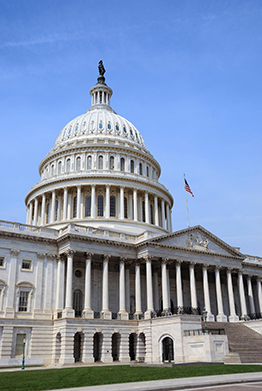BY ALAN FORSBERG, P.E., RETIRED BLUE EARTH COUNTY ENGINEER

In response to a lack of investment in the nation’s infrastructure and its resulting decline, Congress passed and the President signed the Bipartisan Infrastructure Law (BIL) on November 15, 2021. Also known as the Infrastructure Investment and Jobs Act (IIJA), the bill addresses many elements of infrastructure including transportation, climate, energy, the environment, and broadband.
The BIL is a large $550 billion investment over the five years from 2022 to 2026. It is a complex bill of 1,036 pages. The BIL follows the $350 billion American Rescue Act and provides some opportunities to build on this act. It also provides reauthorization of the Federal Highway Administration.
Of the BIL’s $550 billion, $350 billion is dedicated to highway programs nationwide. What does BIL mean for local transportation agencies in Minnesota? I recently visited with MnDOT State Aid staff in St. Paul, a MnDOT State Aid district engineer, a MnDOT district planner, and a county engineer to better understand this question. They were all very helpful.
The increase in federal transportation funds for Minnesota’s local agencies is substantial. In Minnesota, these federal funds are distributed through the Area Transportation Partnerships (ATPs) for each district. Before BIL, the total federal funds allocated to the ATPs was $97,700,000. For 2023 after BIL, it is $130,590,000—an increase of $32,890,000, or 33.7 percent. The existing ATP structure is being used to distribute these funds except for bridges off the federal highway system; these are generally township and some county road bridges, which will remain allocated by MnDOT’s State Aid Central Office.
MnDOT is studying how several new programs, such as Carbon Reduction, NEVI (National Electric Vehicle Infrastructure), and PROTECT (Promoting Resilient Operations for Transformative, Efficient, and Cost-Saving Transportation), will be implemented. MnDOT has established a Program Update Work Group—a committee of about 30 including local government engineers—to enhance the ATP process as needed to fully use the BIL funds.
The bill also allows local agencies to compete directly nationwide for a similar amount of BIL funds for a wide range of discretionary grants including but not limited to Safe Streets, Sustainability and Equity, Transit Programs, Rural Connectivity, and electric vehicle charging ports. These grant programs are expected to be launched over the next year. More than a dozen new programs are being developed. Help in navigating the available programs and the grant application process is planned. The MnDOT State Aid website directs you to helpful resources.
There are some concerns about implementing the additional BIL funds and programs. Staffing available to efficiently and effectively use the funds—both within the agencies and with consultants and contractors—may be a challenge. Environmental review, especially for projects requiring an environmental assessment worksheet or environmental impact statement, may delay and increase project costs. Preparing grant applications for the many discretionary grant programs will be especially challenging for smaller agencies.
BIL also increases the number of items requiring “buy in America” such as non-ferrous metals, glass, and polymers. MnDOT is currently developing the expanded list of “Buy America” items.
Use of BIL funds for MnDOT’s state highway system is currently restricted by lack of budgetary authority and funds to match the BIL funds. Hopefully this will be resolved in the next legislative session.
In summary, the BIL provides a substantial increase in funding for local transportation projects. It allows local agencies to compete directly for many discretionary grants. Considering the need and the resourcefulness local agencies have demonstrated in the past, these funds will be used to benefit the public.
DOT Navigator helps you apply for grants, find resources
The DOT Navigator is a new one-stop shop to access the array of resources across the US Department of Transportation. The site is designed to provide technical assistance and help grantees navigate the grant application, transportation planning, project delivery, funding and financing, and implementation processes. You can also subscribe to receive email updates about the latest information on DOT grant technical assistance resources.